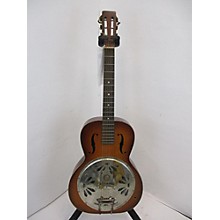
Regal Guitar Serial Numbers
Feb 4, 2014 - Question about Regal Black Lightning RD-52 Squareneck Dobro. Open Question. Yamaha Guitar Serial Numbers: What Can They Tell You? No_numbers_in_name Create your own. [GEAR] Old Regal Guitar Identification. I tried finding a serial number or model and I can't find anything.

When John Dopyera stormed out of the National shop in January 1929, his resignation stemmed from more than a spur-of-the-moment tantrum. For months, the inventor of the resonator guitar spent his evenings and weekends working with his brother, Rudy, on a secret project – a single-cone guitar they believed superior to the National Triolian. They called their new instrument the Dobro. The Triolian’s bridge sat in a round wooden “biscuit” mounted in the center of a metal amplifying cone.
John Dopyera developed the biscuit-bridge system for use in a ukulele, but felt the design did not sustain well enough when enlarged for a guitar. National’s president, George Beauchamp, overruled Dopyera and rushed the Triolian into production in late 1928. Beauchamp and Dopyera had been rubbing each other the wrong way for some time, and this came as the last straw. John and his brothers decided to split from National.
The Dopyeras turned the resonator upside-down and modified its V shape into a W, connected to the bridge by a long screw through the center. A radiating spider carried the sound from the bridge to the edges of the cone. Without a block of wood choking it, the inverted resonator vibrated freely and sustained notes longer than the biscuit-bridge cone. Rudy and Emil (later called Ed) Dopyera left National soon after John. The brothers named their new company Dobro (a shortened version of Dopyera Brothers). M turezhanov malenjkij sadovod.
The word also meant “good” in their native Slovak language. Emil, the salesman, showed the prototype guitar to dealers in southern California and took the first orders. Two other brothers, Louis and Bob, helped finance the venture. In the spring of ’29 Dobro started production in the back room of Russell Plating Company. Within a few months the company moved to a new brick factory at 727 East 62nd Street in Los Angeles. Dobro’s model numbers corresponded to list prices in a system that has long confused collectors.
Because prices changed from year to year, guitars changed model numbers, and the same model number may have applied to several different guitars. For instance, 1929’s Model 45 was a dark, unbound student guitar, 1932’s Model 45 was a bound single-screenhole “Cyclops,” and by late ’33 the Model 45 was a spruce-top with two screenholes.
This was not a progression of the same basic guitar. These were Dobro guitars that in those particular years carried a list price of $45. It was not a good system, and the company stuck it with until production ceased at the dawn of World War II. Dobro’s original 1929 line included the unbound student Model 45, the Standard Model 55 with a bound fretboard, the two-tone French scroll carved (actually sandblasted) Model 65 with a bound ebony fretboard, the Professional Model 85 with a triple-bound mahogany body, and the Model 125 “De Luxe” with a walnut body and four-way matched back. Custom Dobro guitars with gold-plated, engraved hardware and fancy inlay cost from $175 to $250.
Round or square necks were available on all models. Dobro also made mandolins, ukuleles, and “Tenortrope” banjo-guitars with round wooden bodies. By ’31 Dobro introduced the Model 50 tenor guitar, with a bound fretboard and a mandolin-size resonator in a guitar-size body. Dobro started its serial numbers around 800.
Later in the ’30s Regal in Chicago confused things by numbering a run of Dobros across the same range. An early California instrument can be identified by square slot-ends in the headstock, coverplate screws in the points of numbers on a clock, and the lack of a dot at the 17th fret. The dot at the 17th fret was added in late 1930. By 1933 Dobro moved the screws to the half-hour points so a repairman could open a guitar without removing the tailpiece.